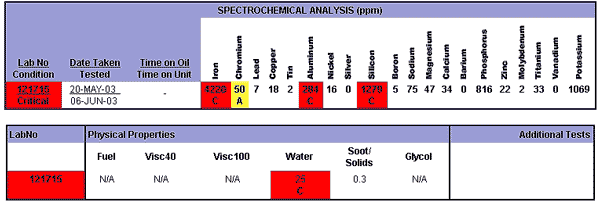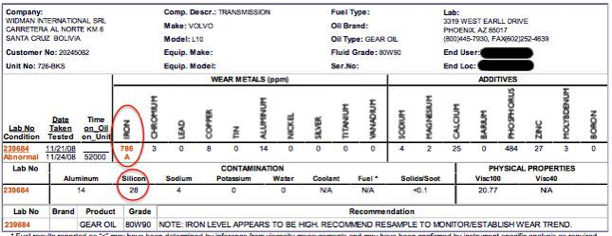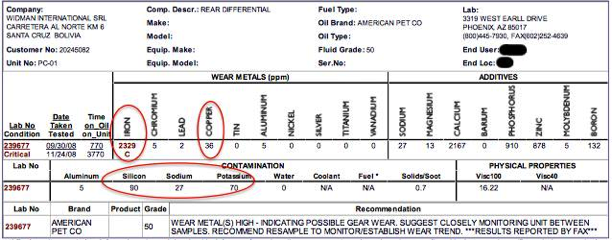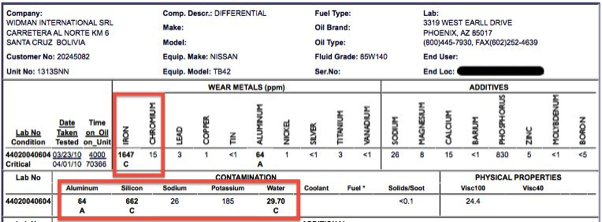Transmission wear
Transmission wear can be from oil contamination or the use of the wrong oil. In the first example we have the oil of a Toyota Land Crusier where the owner swore he never left the city or the pavement. We can see that the oil had 25% water, 1279 ppm of dirt, 75 ppm of sodium (salt) and more than 4200 ppm of iron wear and rust. The transmission had to be replaced and he wanted the dealer to do it under warrantee.

The second sample shows oil contaminated by 28 ppm of dirt. This could have come in through the vent or by using dirty containers or pumps to fill the transmission. The result is 766 ppm of iron wear, shortening the life of the transmission.

Here we have a front end loader that obviously works in water. The water entered through the seals or vent, leaving 90 ppm of dirt, 27 ppm of sodium and 70 ppm of potassium. This dirty water caused 2329 ppm of iron wear and rust, as well as 36 ppm of copper corrosion.
The operator should advise his superiors when he has to work in a river deep enough that it covers the axle. That way the oil can be changed without damage to the internal parts.
The operator should advise his superiors when he has to work in a river deep enough that it covers the axle. That way the oil can be changed without damage to the internal parts.

This is the oil from the differential of a Nissan Patrol 4x4 that only has 70,000 km on it, and only 4000 on the oil. It obviously was driven through a river or flood, not stopping to change the oil afterwards. The 30% water that it contains is filled with 662 ppm of dirt and sand, as well as 28 ppm of sodium. This caused 1647 ppm of iron wear and 15 ppm of chrome wear.


